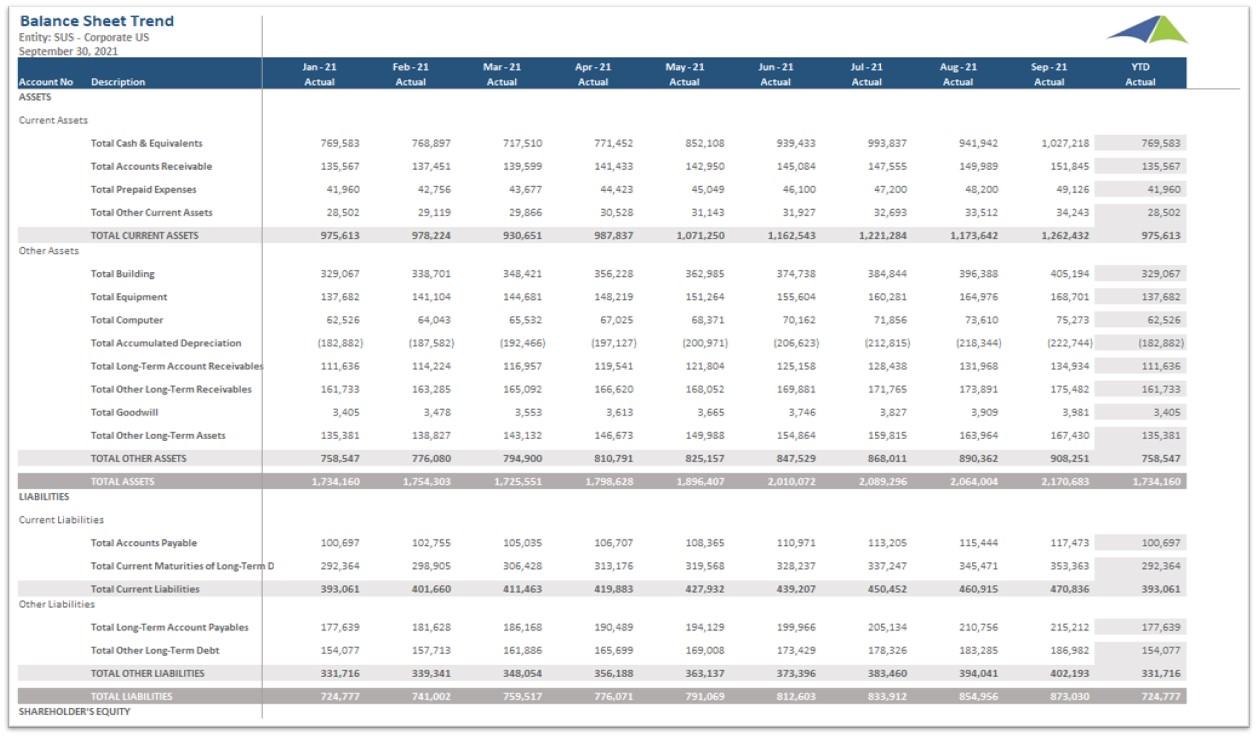Written by Nils R. | Feb 28, 2022 8:00:00 AM
How can
Financial Statement
s Drive Faster and Better Decisions? As CFOs increasingly become key advisors in the Monthly Reporting Process, they must rely on modern self-service corporate performance management (CPM) and business intelligence (BI) tools. Using interactive Financial Statements like the Balance Sheet Trend Report template shown below enables them and users from the executive teams to experience near real time trended asset, liability and equity metrics that help drive faster and better decisions.
Who uses
Balance Sheet Trend Reports
and What are Some Key Analytical Features? In today’s fast-paced business environment, CFOs are under high pressure to supply end users like senior leaders and finance managers with timely and concise Financial Statements. Companies use key features like the ones below to support their users with effective analysis that helps drive investment and debt decisions:

- Monthly trended assets, liabilities, and shareholder equity figures both for this year and last year actuals
- Comparison of Last Year YTD and Current Year variances
- Drill down to account- and journal entry level detail

- Templates from Solver that are pre-built and that work out-of-the-box using the Solver CPM cloud. Click here.
- Template examples: You find more than 500 CPM and BI Template examples here.
- Interactive Dashboard examples: Try Power BI dashboard templates from Solver here.
- Software evaluation and selection:
- Vendor Comparison and ROI (free interactive tool)
- Evaluating planning, budgeting and forecasting functionality
- Evaluating Financial Reporting functionality
- Evaluating Dashboard functionality
- Evaluating Data Warehouse functionality to achieve “one version of the truth”
- Demonstrations and other specific assets: Solver Tour Central
- Using third party analysts and consultants to aid in vendor selection
- Creating efficient processes:
